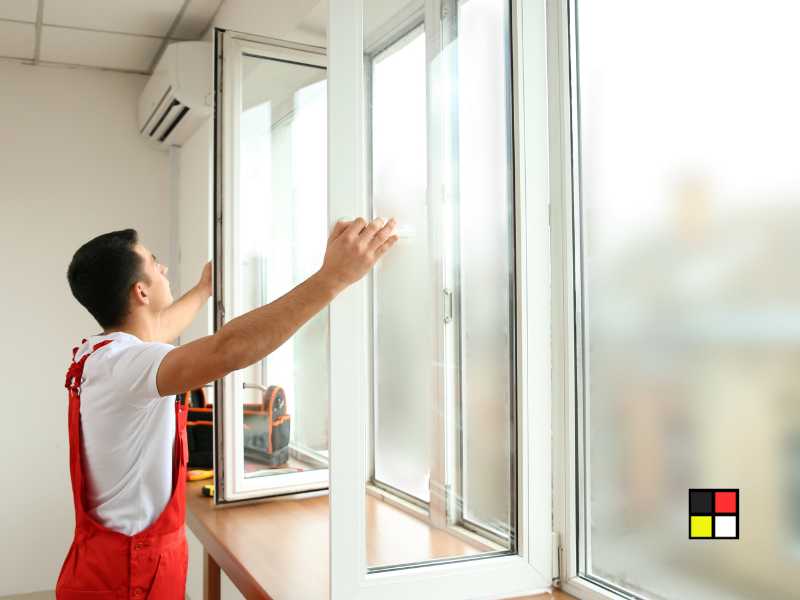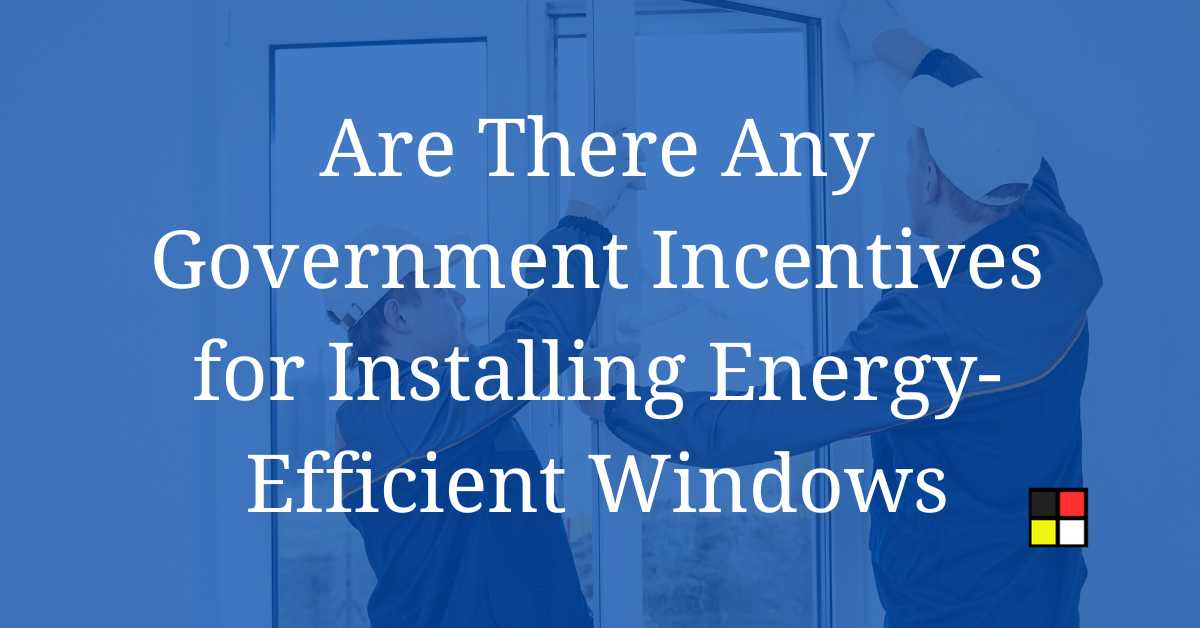As more people seek ways to lower their energy bills and reduce their environmental footprint, the interest in energy-efficient home improvements has surged.
Installing energy-efficient windows not only contributes to conserving energy but can also lead to financial savings through reduced utility bills.
Recognizing this, the government has stepped in to incentivize homeowners to make such eco-friendly updates to their homes.
These incentives are designed not just to lighten the financial burden at the outset but also to promote long-term sustainable practices.

Navigating through these incentives can initially seem daunting, but numerous resources are available to help you understand the benefits and the requirements for eligibility.
The government, at both federal and state levels, offers incentives like tax credits, which you can receive for installing energy-efficient windows.
Meanwhile, local utilities may also provide rebates or other incentives.
Staying informed on these offerings will ensure you maximize your investment while doing your part for the planet.
Key Takeaways
- Installing energy-efficient windows can lead to direct savings on energy bills.
- Government incentives can reduce the cost of energy-efficient home improvements.
- Understanding eligibility requirements is essential to capitalize on these incentives.
Benefits of Energy-Efficient Windows

When you opt for energy-efficient windows, you are making a choice that rewards both your wallet and the environment.
These windows are designed to help maintain a consistent temperature in your home, leading to a more comfortable living space for you and your family.
Let’s explore some of the advantages these windows offer:
- Lower Energy Bills: Energy-efficient windows act as a barrier against outside temperatures, meaning your heating and cooling system won’t have to work as hard. This can translate into significant savings on your utility bills.
- Comfort: You’ll experience fewer drafts and more consistent temperatures throughout your rooms. This means no more chilly spots near windows during the winter!
- UV Protection: Many of these windows are treated to block harmful UV rays, protecting your skin and preventing your furniture, floors, and curtains from fading.
- Noise Reduction: If you live in a busy area, you’ll appreciate that energy-efficient windows can help reduce the noise from outside, providing you with a quieter and more serene home environment.
- Increased Home Value: Not only do they help cut costs in the short term, but energy-efficient windows also tend to be an attractive feature for prospective homebuyers, potentially increasing your home’s resale value.
- Environmental Impact: By reducing your energy consumption, you’re contributing to less greenhouse gas emissions, making energy-efficient windows a more eco-friendly choice.
Remember, while the initial investment might be higher than traditional windows, the long-term savings and benefits you receive can be quite substantial. For information on government incentives for installing energy-efficient windows, you can read about the Energy Efficient Home Improvement Credit.
Federal Tax Credits for Energy Efficiency
If you’re considering installing energy-efficient windows in your home, the federal government offers tax credits to help offset the cost.
Known as the Energy Efficient Home Improvement Credit, this incentive allows you to claim a credit for qualifying improvements, including windows.
For the year 2023 through 2032, you’re able to claim:
- 30% of the cost of your energy-efficient windows
- With an annual cap of $1,200 for all combined improvements
Be aware that there’s a specific limit placed on the credit for window improvements — a total of $600.
Recognizing the value of energy conservation, the federal government has no lifetime dollar limit on these credits, but remember to keep the annual caps in mind.
When you’re ready to claim this credit, you’ll need to make sure that your windows fall within the guidelines for energy efficiency set by the government.
Details about the eligibility criteria for windows are available on the Home energy tax credits page of the Internal Revenue Service.
Here’s a quick summary:
- Eligible Products: Energy Star certified windows
- Credit Amount: 30% of the cost, up to $600 for windows specifically
- Claiming the Credit: Attached to your annual tax return for the IRS
Installing energy-efficient windows not only improves your home’s energy consumption but also can provide a helpful tax return benefit.
Make sure to keep all receipts and certifications related to your energy-efficient improvements to claim your credit correctly.
State and Local Incentives
When you’re thinking about upgrading to energy-efficient windows, it’s worth exploring the various state and local incentives that can make the investment more affordable.
These incentives can vary widely depending on where you live, but they often include rebates, tax credits, or direct assistance programs that can reduce the upfront cost of installation.
For example, certain states provide rebates for energy-efficient home improvements, which can include installing energy-efficient windows.
- Tax Credits: Some local governments offer tax credits to homeowners who install energy-efficient windows. These credits can directly reduce the amount of tax you owe.
- Rebates: Utilities or local governments may offer cash rebates for purchasing specific energy-efficient window models.
- Financial Assistance: Various programs exist to assist with the costs of upgrading to energy-efficient windows, especially for low-income households.
Always check with your local energy office or utility company for details, as the programs may have specific requirements or application processes you’ll need to follow.
Some incentives might only be available for a limited time, while others could be ongoing.
How to Qualify for Incentives

To qualify for government incentives when installing energy-efficient windows, you need to follow certain guidelines and ensure your improvements meet specific standards.
Here’s a step-by-step approach to ensure you’re eligible:
- Check the Energy Certification: Your new windows must be ENERGY STAR certified to qualify for government incentives. Check the product label for this certification before purchase.
- Review Specific Incentives: Different incentives have varying requirements. The Energy Efficient Home Improvement Credit provides specifics on what qualifies.
- Installation Requirements: Ensure the installation aligns with the guidelines provided by the incentive. Proper installation by a certified professional might be necessary.
- Retain Your Receipts: Keep all records of your purchase and installation. This includes itemized sales receipts and invoices, which you’ll need when claiming the credit.
- Tax Form Details: Use the correct tax forms when filing. For example, you might need IRS Form 5695 to claim the Residential Energy Credits.
- Claim the Credit Timely: There might be a deadline to apply for the credit after the installation, so submit your claim within the prescribed time frame.
Frequently Asked Questions
This section addresses some common inquiries you might have about government incentives for installing energy-efficient windows, detailing how you can benefit from available tax credits and rebates.
How does the 30% tax credit work for installing energy-efficient windows?
The 30% tax credit applies to the cost of qualified energy-efficient windows that you’ve installed. This credit is a part of the Energy Efficient Home Improvement Credit, which has specific criteria for the windows’ performance and installation.
Which appliances are eligible for the energy tax credit?
Eligible appliances for the energy tax credit include certain high-efficiency heating and cooling systems, water heaters, and biomass stoves. To see if a specific appliance qualifies, check the Energy Efficient Home Improvement Credit guidelines.
Can I write off new windows as a tax deduction?
Yes, you may be able to claim a tax deduction for new energy-efficient windows under the Energy Efficient Home Improvement Credit, subject to an annual limit and specific eligibility requirements.
What is the ENERGY STAR tax credit and how do I qualify?
The ENERGY STAR tax credit is available for various energy-efficient products that meet the ENERGY STAR program requirements. To qualify, the products, like energy-efficient windows, must be installed in your primary residence and comply with ENERGY STAR specifications.
Are window replacements covered under the Inflation Reduction Act rebates?
Window replacements that improve energy efficiency are included under the Inflation Reduction Act rebates. For more details on coverage and how to apply, you can refer to information provided on the Inflation Reduction Act.
What are the details of the rebate program for replacing windows in California?
California offers specific rebate programs for window replacements to improve home energy efficiency.
Details of these programs can change, so it’s best to consult the latest information from California’s energy-saving rebates and incentives.






